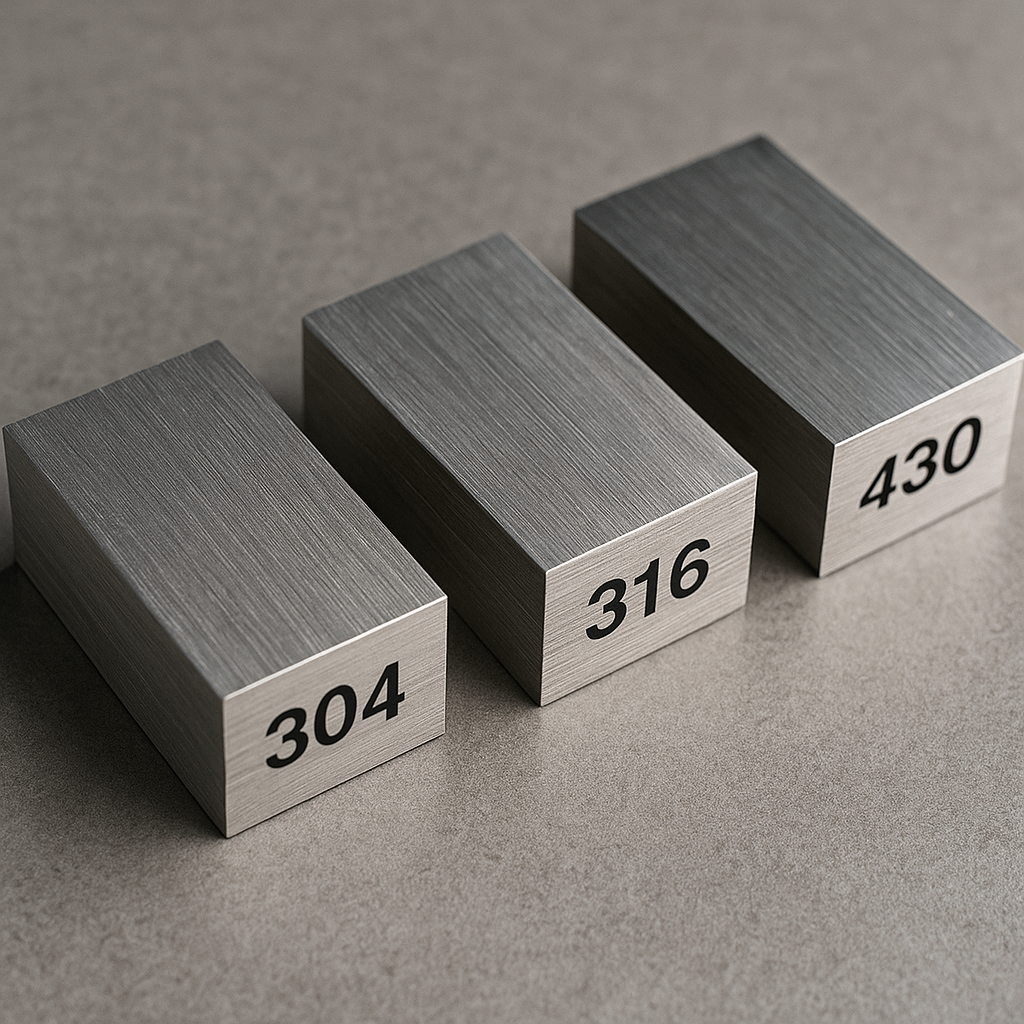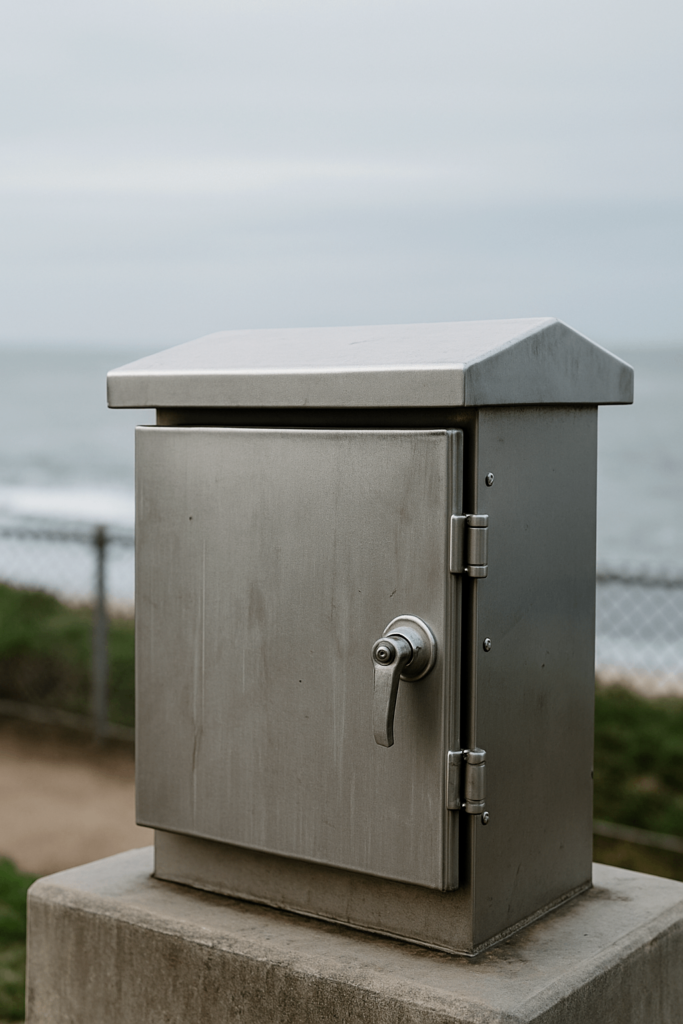Why Stainless Steel Grades Matter More Than You Think
In B2B sourcing, stainless steel isn’t only a material decision—it’s a strategy. The right selection can reduce lifecycle cost, prevent failures, and meet regional compliance standards.
So, what are the 3 grades of stainless steel used most in industrial supply chains? The answer: 304, 316, and 430. Together, they dominate fabrication in food equipment, cabinets, kiosks, and structural frames.
This guide is tailored for international buyers and sourcing managers who need a supplier-level understanding of stainless performance. We’ll compare strengths, chemical resistance, machinability, and downstream compatibility (like powder coating or welding).
Whether you’re sourcing for humid environments, indoor structures, or export-grade builds, choosing the right alloy stainless product affects everything from lead time to post-finish durability.
What Makes 304, 316, and 430 Stainless Steel So Different?
Stainless steel is not one material—it’s a family of iron-based alloys alloyed with chromium and other elements to create a passive corrosion-resistant layer.
304 grade stainless steel (18/8 stainless or AISI 304) is an austenitic alloy. It contains 18% chromium and 8% nickel. It offers excellent formability, welding performance, and oxidation resistance.
316 stainless steel adds 2–3% molybdenum. This boosts resistance to chloride-induced corrosion, pitting, and chemical attack, especially in coastal or acidic environments.
430 stainless steel is a ferritic alloy—nickel-free and magnetic. It has lower corrosion resistance but lower cost, making it suitable for non-critical, dry-environment structures.
Differences in their microstructures—like austenitic vs ferritic—also impact machinability, weldability, and surface treatments. In many procurement documents, the distinction between alloy stainless products and carbon steel grades directly affects long-term TCO and supplier requirements.
Additionally, buyers seeking OEM stainless steel fabrication should understand that grade selection affects downstream welding, polishing, and suitability for powder coating or bead blasting.
304 Stainless: The Global Workhorse
304 stainless steel is the most widely specified alloy in international manufacturing. Its high ductility makes it suitable for deep drawing and bending. Machinability and fabrication ease make 304 ideal for volume production.
It also shows strong resilience under dynamic loads, with a 304 stainless steel yield strength around 215 MPa and ultimate tensile strength exceeding 500 MPa. The alloy performs well up to 870°C, making it suitable for heated enclosures and ovens.
Procurement specialists often evaluate the 430 vs 304 cost difference. While 304 offers higher corrosion resistance and versatility, its mid-range pricing makes it ideal for value-engineered projects.
For aggressive environments, a higher grade with molybdenum—like 316—is often required. This performance gap under harsh conditions leads us to the next logical upgrade: 316 stainless.
316 Stainless: For Harsh or Corrosive Environments
316 stainless steel is engineered for more aggressive settings. Its molybdenum content enhances resistance to chlorides, pitting, and chemical exposure—making it ideal for marine and coastal applications.
316 stainless steel yield strength and tensile properties are similar to 304, but it excels in preventing crevice corrosion and failure in pressure-bearing assemblies.
Though its machinability is lower than 304, 316 stainless delivers longevity in environments with humidity, salt, or industrial-grade contaminants. It is the preferred choice when maintenance costs, compliance, or lifecycle ROI take priority.
316l stainless is widely used in welded structures for its enhanced protection against weld decay without compromising corrosion performance.
430 Stainless: For Budget-Driven, Dry Applications
430 is best for dry, indoor environments where corrosion risks are minimal. It’s widely used in wall panels, vending machines, and interior frames.
It is magnetic, cost-effective, and performs well in enclosed environments. However, it has limited weldability and forming ability. 430 stainless steel sheet price per kg remains competitive for mass-market production lines.
Avoid using 430 in humid or chloride-rich environments. Even partial outdoor exposure or poorly ventilated spaces can lead to rapid rusting.
Quick Comparison Table: Fit to Function
| Property | 304 (1.4301) | 316 (1.4401) | 430 (1.4016) |
|---|---|---|---|
| Microstructure | Austenitic | Austenitic | Ferritic |
| Chromium (%) | 18–20 | 16–18 | 16–18 |
| Nickel (%) | 8–10.5 | 10–14 | 0 |
| Molybdenum (%) | 0 | 2–3 | 0 |
| Magnetic | No | No | Yes |
| Corrosion Resistance | Good | Excellent | Moderate |
| Machinability | High | Moderate | Low |
| Powder Coating Suitability | Excellent | Excellent | Moderate |
| Weldability | Excellent | Excellent | Limited |
| Cost (per ton estimate) | $$ | $$$ | $ |
| Use Cases | Sinks, shelves, tanks | Marine, food, pharma | Vending, trim, décor |
What to Avoid When Sourcing Stainless Grades
Misjudging the Application Risk
A common sourcing mistake is assuming 304 or 430 will suffice. Exposed components like outdoor kiosks or railings need a corrosion-resistant grade. Always evaluate exposure to chlorides, humidity, and industrial chemicals.
Over-Specifying Without ROI
Many buyers default to 316 when 304 would suffice. If the application is indoors, away from salts or acids, the added cost might not return meaningful value.
Skipping Verification
Mislabeling happens. Always ask for Mill Test Certificates and consider PMI (positive material identification) for compliance-critical builds. Don’t confuse 201 or 202 with true 304—verify specs with ASTM or EN standards.
Confirm RoHS compliance and ISO-certified sourcing for global reliability.
Field Insights: What Real Buyers Learned
Signage Systems in High-Humidity Zones
A retail chain used 304 signage frames in Southeast Asia. Surface rust appeared within 12 months. Upgrading to 316 solved the issue.
OEM Cart Frames for Export
A German buyer reduced costs by 18% by switching from 316 to 304 after confirming no chloride exposure in transit zones.
Food Vending Shells
A North American customer used 430 for indoor vending machine panels. Powder coat stainless steel protection lasted over 3 years with no visible degradation.
Frequently Asked Questions
What are the 3 grades of stainless steel most commonly used?
304, 316, and 430—covering both austenitic and ferritic categories.
Does powder coating affect corrosion performance of stainless steel?
Yes, especially on ferritic grades. Surface prep and coating method impact long-term corrosion protection.
Which stainless grade is more cost-efficient over a 5-year lifecycle?
304 typically provides better ROI for dry environments. For high-exposure conditions, 316 pays off through lower failure and maintenance.
Is 430 stainless steel food safe?
Yes, if used in dry and non-acidic contact environments.
How to verify stainless grade from an overseas supplier?
Check MTCs, conduct PMI tests, and confirm ISO certification.
Choose with Clarity, Not Guesswork
Choosing between 304, 316, and 430 isn’t about good vs bad. It’s about aligning grade properties with real-world conditions.
Buyers who map stainless selection to performance and lifecycle factors reduce downtime, improve compliance, and optimize spend.
Need help matching the right grade to your RFQ? Contact YISHANG—we respond within 24 hours.



